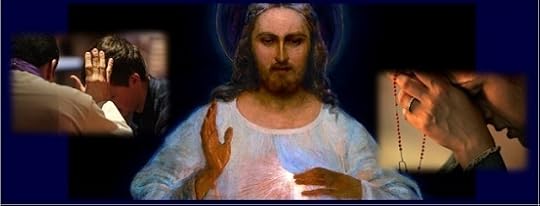Carl E. Olson's Blog, page 105
March 20, 2014
Catholic Social Teaching, Work, and a Jobless Recovery

Catholic Social Teaching, Work, and a Jobless Recovery | Fr. Father George E. Schultze, SJ | CWR
Catholic social doctrine supports both justice for workers and the promotion of marriage and the family; they are not separate concerns.
Two years ago, Dr. Rupert J. Ederer wrote in Inside the Vatican that while Karl Marx’s economic theory proposed inevitable class conflict, Father Heinrich Pesch, SJ’s (1854-1926) theory focused on social justice (giving what is due to others) and social charity (giving what is yours to others) as the surest means to promote the common good. When one reads solidarity in Catholic social encyclicals, then one must remember Pesch. He argued for a solidaristic system of human work, drawing from Scripture and Church tradition. Work is not just what happens at one’s job; it encompasses the interdependence of our lives in the family, community, nation, and world. On the one hand, our individual interests, according to Pesch, could either support or detract from the common good; on the other hand, the state—while playing a valid role in society—is neither the sole judge of the common good nor the best administrator of private property. He believed that society prospers when workers and their employers organize with each other rather than against each other.
Pesch’s understanding of the moral theology of St. Thomas Aquinas was central to his use of solidarity, which is grounded in Christian neighbor love, the Beatitudes, and the Church Fathers’ social teaching. His use of solidarism rejected both the injustice of Marxist collectivism that would deny freedom, and a capitalist, self-interested individualism that could lead to greed. The upholding of justice and the self-giving in charity of solidarism remain vital to the common good. Pesch’s contribution to Catholic social teaching is useful for reflecting upon the present state of unions and the national work force.
The current situation
The United States is experiencing a jobless recovery with 10.2 million unemployed workers that account for 6.6 percent of the work force. Each month thousands of jobs are created, while at the same time thousands of new workers enter the work force; the economy, unfortunately, is creating too few jobs for the growth in the working population.
March 19, 2014
Celebrating the Feast of St. Joseph

Offer ends Wednesday, March 26th, 2014 at 12:00 midnight EST.
These prices are available online only through Ignatius.com
20% off Great Titles for the Feast of St. Joseph!
JOSEPH'S WAY
The Call to Fatherly Greatness • By Devin Schadt
ISBN: 978-0-98992-420-7 • 343 pages • Softcover • $16.95
SALE PRICE: $13.56
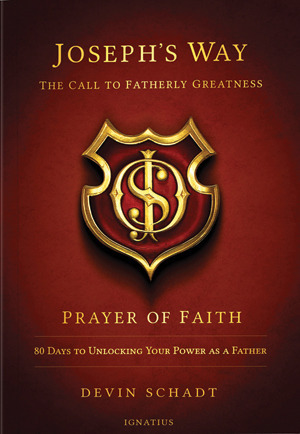
"Distinctively unique, bold, and most timely for the man of today...a poignant and pertinent challenge to men to be REAL men" - Rev. Fr. John Trigilio, Jr., Author,Catholicism for Dummies
"Within these pages, Devin Schadt offers spiritual insights that are practical, straightforward, and unapologetically challenging." - Jason Evert, best-selling Catholic author, speaker
"There is a distinct voice in Devin Schadt'sJoseph's Way: The Call to Fatherly Greatness. It is a voice reminiscent of Thomas à Kempis. An ageless voice echoing a wisdom outside of time directed to the men of our time...Joseph's Way is destined to be a spiritual masterpiece."
- Brian Gail, best-selling Catholic author,Fatherless
Become the Father You're Called to Be.
Society goes by way of the family and the family goes by way of the father. If you want to change the world, change the human father. Joseph's Way: Prayer of Faith is the first release of a two volume series which transmits the biblical vision of fatherhood, its necessity, its glory, and its irreplaceable effect on families and society. Joseph's Way is a tough, bold, game-changing challenge to men of our age to pursue fatherly greatness.
Buy Now!

Meet the Author
Devin Schadt is a husband, father, author and speaker who transmits the message of the glory, necessity, and power of fatherhood. Devin is the cofounder of the Fathers of St. Joseph, an apostolate that works for the renewal of authentic fatherhood. Devin lives in the Midwest with his wife and five children.
Other Great Titles for St. Joseph's Day
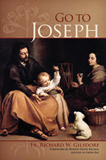
Go to Joseph
In these highly intimate, insightful, meditations, noted Scripture scholar Fr. Richard Gilsdorf investigates the New Testament’s most mysterious figure.
Sale Price: $7.16

Strong Fathers, Strong Daughters: The 30-Day Challenge
The 30-Day Challenge takes readers through thirty father-daughter activities, meant to strengthen dads in their parenting roles, while also creating honest and thriving relationships.
Sale Price: $11.96

Joseph: Man Closest to Christ
This powerful film explores all aspects of St. Joseph and the many ways he reflects the nature of God, combining stunning artwork and interviews with Catholic leaders.
Sale Price: $11.96
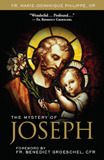
The Mystery of Joseph
This illuminating book leads you deep into the beautiful mystery of St. Joseph - revealing the greatness of this apparently unremarkable man.
Sale Price: $11.96

Parenting on Purpose
Parenting on Purposeprovides you with all you need to develop a plan for leading your kids to a clear awareness of their Christian identity, so that Christian values, beliefs and attitudes will become as natural to them as breathing.
Sale Price: $11.96
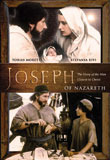
Joseph of Nazareth
This first feature film ever on the story of St. Joseph, shows the human, noble and the deeply spiritual aspects of Joseph the carpenter, son of David, servant of God and loving husband of Mary.
Sale Price: $15.96

Strong Fathers, Strong Daughters
Dr. Meeker demonstrates that the most important factor for girls growing up into well-adjusted women is a strong father.
Sale Price: $11.96
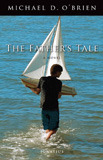
The Father's Tale
When his son disappears without any explanation, Canadian bookseller Alex Graham begins a long journey that takes him for the first time away from his safe and orderly world. Also available as an audio download and e-book.
Sale Price: $23.96
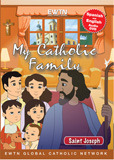
Saint Joseph
As they prepare for the feast of St. Joseph, Fr. Miguel helps the children see how St. Joseph was obedient to the will of God, and in the process teaches them the importance of trusting god and the value of obedience.
Sale Price: $11.96


March 18, 2014
Cosmos and One More Telling of the Tired Myth
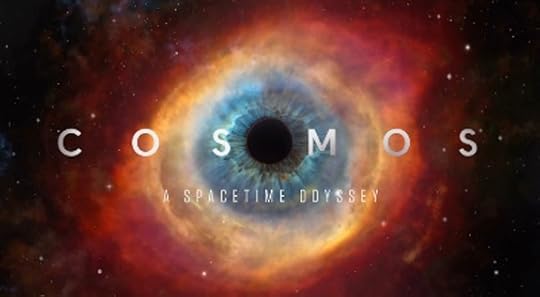
by Fr. Robert Barron | CWR Blog
Seth MacFarlane, well known atheist and cartoonist, is the executive producer of the remake of “Cosmos,” which recently made its national debut. The first episode featured, along with the science, an animated feature dealing with the sixteenth century Dominican friar Giordano Bruno, who was burned at the stake by Church officials. A brooding statue of Bruno stands today in the Campo de’ Fiori in Rome on the very spot where the unfortunate friar was put to death. In MacFarlane’s cartoon, Bruno is portrayed as a hero of modern science, and church officials are, without exception, depicted as wild-eyed fanatics and unthinking dogmatists.
As I watched this piece, all I could think was…here we go again. Avatars of the modern ideology feel obligated to tell their great foundation myth over and over, and central to that narrative is that both the physical sciences and liberal political arrangements emerged only after a long twilight struggle against the reactionary forces of religion, especially the Catholic religion. Like the effigies brought out to be burned on Guy Fawkes Day, the bugbear of intolerant and violent Catholicism has to be exposed to ridicule on a regular basis.
I will leave to the side for the moment the issue of liberal politics’ relation to religion, but I feel obliged, once more, to expose the dangerous silliness of the view that Catholicism and the modern sciences are implacable foes.
March 17, 2014
Dickens, Ratty, and Middle Earth
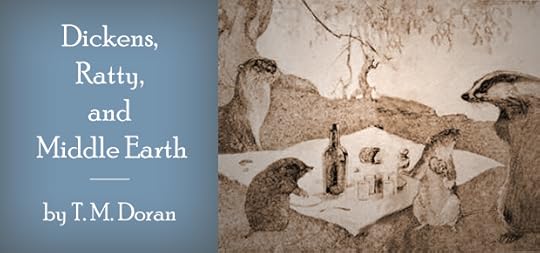
Dickens, Ratty, and Middle Earth | T. M. Doran | IPNovels.com
Many who have read and treasured The Hobbit and The Lord of the Rings have insisted that no other story has had a comparable effect on them. People point to other literary myths and fantasy stories that have been enjoyable reads, but which pale in comparison to Tolkien’s masterpiece.
Such observations seem to suggest that The Hobbit and The Lord of the Rings came out of nowhere, but the truth is that no story comes out of nowhere; every story is derivative of other stories in one sense or another. J. R. R. Tolkien himself pointed to many influences, including the epic myths, and medieval stories and legends.
It’s important to separate such creative derivations from pastiche and mere copycats. How many stories written since The Lord of the Rings could be put in these categories?
The Fragile Promise of the Pan-Orthodox Council
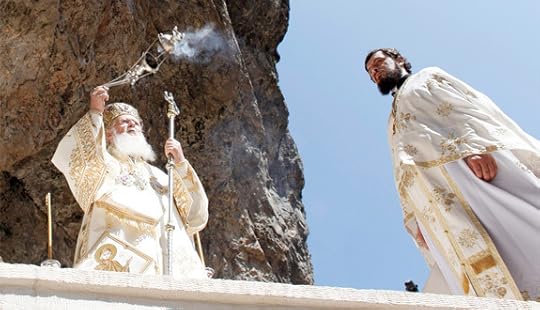
Ecumenical Patriarch Bartholomew of Constantinople celebrates an Orthodox liturgy for the feast of the Dormition of Mary at the Panagia Soumela Monastery near Trabzon, Turkey in August 2010. The Patriarch will preside over the Orthodox council to be held in Constantinople in 2016. (CNS photo/Umit Bektas, Reuters)
The Fragile Promise of the Pan-Orthodox Council | Fr. Cyril Hovorun | CWR
The announced 2016 council of Eastern Orthodox Churches is historical, but expectations should be modest
An Assembly (Synaxis) of the Primates of the local Orthodox Churches, meeting March 6-9, 2014 in Istanbul, has agreed to convene a Pan-Orthodox council. A “Communiqué of the Primates of the Orthodox Churches” released on March 9th stated that “the Holy and Great Synod of the Orthodox Church … will be convened and presided by the Ecumenical Patriarch in Constantinople in 2016.” This decision brings to the homestretch a long process of preparation that goes back as far as the 1920s, had an active phase in 1960s and 1970s, and then was rather quiet until very recently.
Historical context
The last Pan-Orthodox council of this scale was convened in Constantinople well over a thousand years ago, in 879-880, when Photius was reinstalled to the Patriarchal throne. That council dealt mostly with the issues of inter-Church relations and had wide representation of the Eastern Christian Churches, with over 380 bishops in attendance. Some Orthodox believe that the IV Council of Constantinople (its other name) was the eighth and last ecumenical council.
After Byzantium lost most of its territories, the councils of the same scale became impossible. Nevertheless, the Eastern Church continued exercising its synodality. Many Eastern bishops and even Patriarchs were unable or did not want to stay with their flocks on the occupied territories. They either preferred,or had no choice but to spend most of their time in safe Constantinople. The old institution of endemousa synod—that is, a gathering of all bishops who, by chance, found themselves in the capital—became a major instrument of the Church’s synodality. Not only the hierarchs under the jurisdiction of Constantinople, but also bishops and even Primates of other Patriarchates, participated in such councils, which managed ecclesial matters related not only to the Church of Constantinople but to the entire Eastern Church.
After the collapse of the Ottoman empire, the Orthodox Churches began discussing the possibility of convening a Pan-Orthodox council.
March 16, 2014
Early Suggestions on How Our Parishes Can Observe Divine Mercy Sunday This Year
Early Suggestions on How Our Parishes Can Observe Divine Mercy Sunday This Year | John M. Grondelski | HPR
The feast is intended to highlight divine mercy as God’s greatest attribute, the crowning work” of all his works. As such, it should form a Catholic’s spiritual attitudes and behaviors.
Each year since 2000, the Church Universal has marked the Second Sunday of Easter as “Divine Mercy Sunday.” Blessed John Paul II designated that day as the Feast of Divine Mercy when he canonized Maria Faustina Kowalska (1908-38) in 2000, the first saint canonized in the third millennium.
St. Faustina was a nun who, in the 1930s, received a series of private revelations centered on God’s mercy as his greatest attribute. She recorded those experiences in her Diary. 1 In addition to a theology and spirituality of Divine Mercy, the revelations also contain five concrete forms of devotion requested by the Lord, one of which was the institution of the Feast of Divine Mercy. (The others include a chaplet prayer, similar to the rosary; a daily 3:00 p.m. reflection on Christ’s passion and divine mercy; an image of Jesus as the Divine Mercy; and a request to spread mercy, both in terms of the devotions themselves, as well as through concrete spiritual and corporeal acts of mercy). The devotions themselves also have promises attached to them for those who pray them sincerely.
In the case of the Feast of Divine Mercy, our Lord promises that ” . . . {W}however approaches the Fount of Life on this day will be granted complete remission of sins and punishment” (Diary, # 300). “On this day, the very depths of my tender mercy are open. I pour a whole ocean of graces upon those souls who approach the fount of my mercy. The soul that will go to confession, and receive Holy Communion, shall obtain complete forgiveness of sins and punishment . … Let no soul fear to draw near to me, even though its sins be as scarlet” (Diary, # 699).
Because the Feast of Divine Mercy is relatively new to the Church worldwide, some parishes may wonder how best to mark it. Here are some suggestions for how parishes can observe the Feast of Divine Mercy, which next occurs April 27, 2014.
"The Sound of Music": The Last Drop of Golden Sun

The Sound of Music: The Last Drop of Golden Sun | Patrick Coffin | CWR
“Only grown-up men are scared of women.”
The Rodgers and Hammerstein musical The Sound of Music marked the culmination of creativity by the teams that wrote Oklahoma!, Carousel, South Pacific, and The King and I. It also marked the end of an era. In a sense, it was released at the pre-dawn of the Sixties—not the numeric decade we call the “1960s,” but the cultural one, the Age of Aquarius, LSD, Woodstock and the Kent State shootings.
The musical was already a smash hit on Broadway and London’s West End years before director Robert Wise agreed to helm the big screen version. It was shot in 1964 on sound stages in Century City, California, and on location in and around Salzburg, Austria. The musical on which it is based was the last project by Oscar Hammerstein II who, after a career of co-writing an astounding 850 songs, died of cancer shortly after the show’s 1959 Broadway debut. His last creation was the ballad “Edelweis”.
The first half of the (numeric) 1960s was marked by relative stability and what might be called American cultural gentility. The assassination in 1963 of President John Kennedy was a world-rocking exception to the rule, providing as it did a kind of dark prophecy of the social vicissitudes that would roil the country in the decade to come.
Movie content provides a lens through which to see the shift from communitarian concord to anti-authoritarian animus—not that all traditions and authorities were respected before 1965 and not that the post-1965 world had no gentility. And by movie content I don’t just mean what the movies “are about.” I mean what they presuppose and how they were critically rewarded as artifacts of show business. Here’s a snapshot of the movies that won Academy Awards for Best Film in the 1960s, before and after The Sound of Music:
March 15, 2014
The Cross is the doorway to communion with God
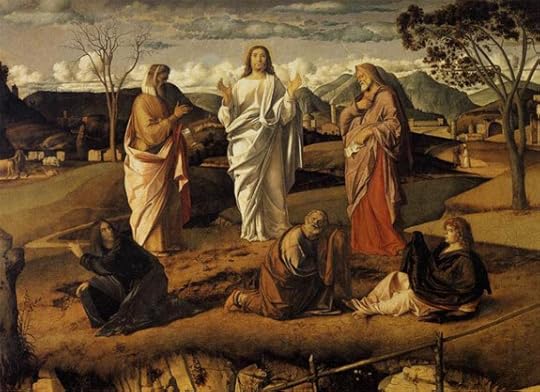
"The Transfiguration of Christ" by Giovanni Bellini (c. 1487)
A Scriptural Reflection on the Readings for Sunday, March 16, 2014 | Carl E. Olson
Readings:
• Gen 12:1-4a
• Ps 33:4-5, 18-19, 20, 22
• 2 Tim 1:8b-10
• Mt 17:1-9
“Life is short; death is certain,” wrote Blessed John Henry Newman, “and the world to come is everlasting.” It is a fitting introduction to today’s readings, for together they form a powerful discourse about the life, death, and eternity.
There are several rich, if subtle, connections to be found between the reading from Genesis, which describes God’s covenant with Abram, the reading from St. Paul’s second letter to the young Timothy, and the Gospel reading, which recounts the Transfiguration on the mountain. The three that I’ll highlight here can be summarized as calling, blessing, and anticipating. And while these three are always essential to the Christian walk, they have perhaps an even greater force of meaning during the Lenten season.
Calling: The first words of God to Abram (or at the least the first words recorded) are a call to faith and action: “Go forth from the land of your kinfolk…” In a culture in which one’s extended family was the core of one’s social and religious life, this was a call to a completely new life. It required immense trust, especially since Abram would likely never return to see his father’s household and his homeland. But the promises of blessing were just as immense: “I will make you a great nation, and will bless you…” This blessing, of course, was presented in material, temporal terms; there was not yet an understanding of blessings in the afterlife. And so Abram anticipated blessings of a temporal sort: land, a great name, offspring, and far-reaching renown.
Blessing: Paul’s words to his spiritual son, Timothy, could also be applied to Paul’s spiritual father, Abraham, who was saved and called to a holy life, not according to his works, but according to God’s design. And, conversely, God’s words to Abram could also be applied in a certain—but far more profound—sense to the Son of God: he was called to go forth and enter “a land”, that is, first-century Israel. And he became Incarnate so that he would be a blessing to “all the communities of the earth”, and would build a great nation, the Church (cf. 1 Pet 2:9). By taking on flesh and becoming man, Paul notes, God’s grace was “made manifest”. Our savior Christ Jesus, having entered a fallen and sinful land, would destroy death and bring everlasting life.
Anticipating: While in the desert, Moses the lawgiver had taken Aaron, Nadab, and Abihu with him up the mountain to see God (Ex 24:9ff). Elijah the prophet had also been in the presence of God on the mountain (1 Kng 19:8ff). Yet despite having close communion with God, both men experienced rejection at the hands of their own people. Jesus, in taking Peter, James, and John up Mount Tabor, was calling them to a deeper discipleship, to a clearer (and unsettling) understanding of Jesus’ identity and calling, and their own identity and calling. They were blessed, but their blessing came by the way of the cross, for the cross is the doorway to communion with God.
Pope Benedict XVI, in his 2011 Lenten Address, wrote, “The Cross of Christ, the ‘word of the Cross’, manifests God's saving power (cf. 1Cor 1: 18), that is given to raise men and women anew and bring them salvation: it is love in its most extreme form.” The Transfiguration was a foretaste of the power and glory of God; it was a grace meant to shine in the dark night that enveloped the apostles following the crucifixion. It would remind them of their calling, make real their blessing, and keep alive their anticipation.
“The Gospel of the Transfiguration of the Lord,” writes the Holy Father, “puts before our eyes the glory of Christ, which anticipates the resurrection and announces the divinization of man. … He desires to hand down to us, each day, a Word that penetrates the depths of our spirit, where we discern good from evil (cf. Heb 4:12), reinforcing our will to follow the Lord.”
(This "Opening the Word" column originally appeared in the March 20, 2011, edition of Our Sunday Visitor newspaper.)
March 14, 2014
Now available: "Mother Teresa", starring Olivia Hussey
Available from Ignatius Press, the complete, unedited, original full-length 177 minute film never before seen on DVD:
In an acclaimed film portrayal, Olivia Hussey illuminates the life story of Mother Teresa of Calcutta, the selfless missionary who brought hope, love and salvation to the poorest of the poor. The movie examines the fundamental moments of Mother Teresa's life from her childhood in Albania in the 1920s to her first calling as a nun, the decision to leave her order and live with the poorest of the poor, the vicissitudes of founding the Congregation of the Missionaries of Charity, and her great work of service in Calcutta and the rest of the world.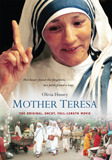
A shrewd diplomat and an indomitable force, Mother Teresa was unwilling to accept what others deemed impossible, fearlessly fighting for the unloved and the forgotten. She was regarded as one of the most significant personalities of the 20th Century, although she never owned more than a white and blue sari. She influenced the decisions of the most powerful men on Earth, although she always stayed close to the poorest people of the world.
The film follows her through the slums of Calcutta as she mingled closely with her people, dispensing help, joy and smiles to everyone, with her loving embraces, and also shows her stubbornness with the people who wanted to block her way.
Her faith and good works transcended hardships and ultimately earned her international acclaim, including the Nobel Peace prize. The many small miracles, great charity and humble triumphs of Mother Teresa will inspire you in this poignant tale of a modern-day saint.
The complete, unedited, original full-length 177 minute film never before seen on DVD.
Includes a 16 page Collector's Companion Booklet.
This DVD contains the following languages: English with English or Spanish subtitles.

Pope Francis on Knowledge, Faith, and Demons
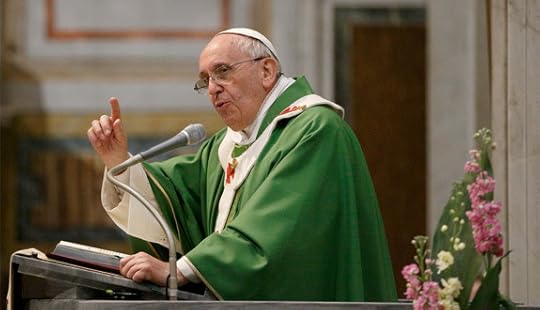
Pope Francis gives the homily during Mass at the Basilica of the Sacred Heart of Jesus in Rome earlier this year. (CNS photo/Paul Haring)
Pope Francis on Knowledge, Faith, and Demons | Fr. James V, Schall, SJ | CWR blog
“To believe is immediately an act of the intellect, because the object of that act is the true, which pertains properly to the intellect. Consequently, faith, which is the proper principle of that act, must needs reside in the intellect.” — St. Thomas Aquinas, Summa Theologiae, II-II, 4, 2.
“Thus, ‘we can recite the Creed, theoretically, even without the faith.’ He (Pope Francis) said, ‘and there are many people who do so! Even the demons.’” — Pope Francis, Homily, Santa Marta, February 21, 2014.
Pope Francis’ “style” is more familiar to us. Every morning, he diligently gives a sermon that reflects on the daily readings, but can touch on just about anything that comes to his mind. Obviously, these morning reflections are prepared, but are not written so that they might someday appear in a “collection” of papal sermons. But some gathering of these lively sermons will certainly be made available. What we have in L’Osservatore Romano is a summary, with many direct quotations, of what the Pope has said that morning. Not a few of these somewhat off-handed papal comments, like his reference to Robert Hugh Benson’s novel, The Lord of the World, make morning headlines throughout the world.
Recent Mass readings were from the Epistle of James, the letter that Martin Luther did not at all like. Though many of these things have long been hashed out in Catholic-Lutheran dialogues, the initial impression was that Luther did not like James because of the latter’s insistence that faith had also to result in works. In this sense, it seemed that sola fide, faith alone, was not enough. With proper distinctions, both Catholics and Lutherans hold that both are necessary. Our faith should result in some positive action in the world, But if we have no faith, our deeds will appear to mean that we can gain heaven by just working for it on our own with no need for grace to attain our highest purpose.
Pope Francis tells us that St. James wants to explain what the faith is.
Carl E. Olson's Blog
- Carl E. Olson's profile
- 20 followers


